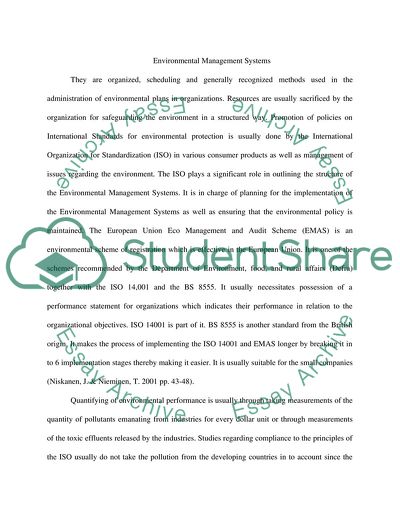Cite this document
(Environmental Management Practices Essay Example | Topics and Well Written Essays - 2750 words, n.d.)
Environmental Management Practices Essay Example | Topics and Well Written Essays - 2750 words. Retrieved from https://studentshare.org/environmental-studies/1721720-critically-examine-the-extent-to-which-environmental-management-system-ems-standards-can-contribute-to-improvements-in-corporate-environmental-performance
Environmental Management Practices Essay Example | Topics and Well Written Essays - 2750 words. Retrieved from https://studentshare.org/environmental-studies/1721720-critically-examine-the-extent-to-which-environmental-management-system-ems-standards-can-contribute-to-improvements-in-corporate-environmental-performance
(Environmental Management Practices Essay Example | Topics and Well Written Essays - 2750 Words)
Environmental Management Practices Essay Example | Topics and Well Written Essays - 2750 Words. https://studentshare.org/environmental-studies/1721720-critically-examine-the-extent-to-which-environmental-management-system-ems-standards-can-contribute-to-improvements-in-corporate-environmental-performance.
Environmental Management Practices Essay Example | Topics and Well Written Essays - 2750 Words. https://studentshare.org/environmental-studies/1721720-critically-examine-the-extent-to-which-environmental-management-system-ems-standards-can-contribute-to-improvements-in-corporate-environmental-performance.
“Environmental Management Practices Essay Example | Topics and Well Written Essays - 2750 Words”, n.d. https://studentshare.org/environmental-studies/1721720-critically-examine-the-extent-to-which-environmental-management-system-ems-standards-can-contribute-to-improvements-in-corporate-environmental-performance.


